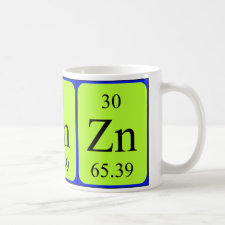
Authors: Zhao JC, Han B, Zhang YF, Wang DD
Article Title: Synthesis of Zn(II) ion-imprinted solid-phase extraction material and its analytical application.
Publication date: 2007
Journal: Analytica Chimica Acta
Volume: 603
Issue: (1)
Page numbers: 87-92.
DOI: 10.1016/j.aca.2007.09.024
Alternative URL: http://www.sciencedirect.com/science/article/B6TF4-4PPF6BV-7/2/b02f27ee14ca06d3f0f842fc97a7359f
Abstract: Zn(II) ion-imprinted polymer materials used for solid-phase extraction (SPE) column were prepared by the copolymerization of 8-acryloyloxyquinoline (8-AOQ) monomer and a crosslinker ethylene glycol dimethacrylate (EGDMA) in the presence of 2,2'-azobisisobutyronitrile (AIBN) as an initiator. After removing Zn(II) ion from the polymer, molecularly imprinted polymers (MIPs) capable of selectively rebinding Zn(II) ion were obtained. The maximum adsorption capacity of Zn(II) on MIPs beads was about 3.9 mg g-1. The effect of pH and flow rate for quantitative enrichment was also investigated. The Zn(II)-imprinted microbeads have a greater affinity for Zn(II) with respect to Cu(II), Co(II) and Ni(II) ions. A detection limit of 0.65 μg L-1(3σ) and a relative standard deviation (R.S.D., n = 7) of 2.9% were obtained. The MIPs-SPE preconcentration procedure showed a linear calibration curve within concentration range from 0.65 to 130 μg L-1. Zn(II) ion-imprinted beads enabled the selective extraction of zinc ions from a complex matrix, and after 20 times of adsorption and desorption cycle, the recovery of adsorption capacity of Zn(II) on MIPs beads was only decreased 3.2%. The results suggested that these MIPs can be used several times without considerable loss of adsorption capacity
Template and target information: zinc ion, Zn(II)
Author keywords: Zinc ion, molecularly imprinted polymer, Solid-phase extraction, ionic imprinting



Join the Society for Molecular Imprinting

New items RSS feed
Sign-up for e-mail updates:
Choose between receiving an occasional newsletter or more frequent e-mail alerts.
Click here to go to the sign-up page.
Is your name elemental or peptidic? Enter your name and find out by clicking either of the buttons below!
Other products you may like:
 MIPdatabase
MIPdatabase









